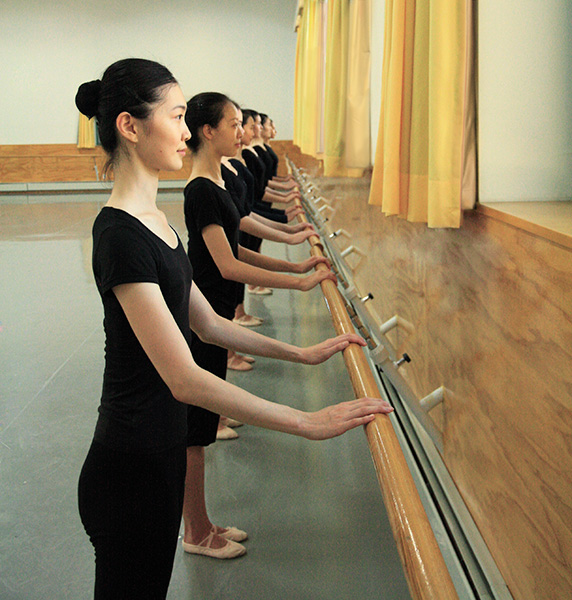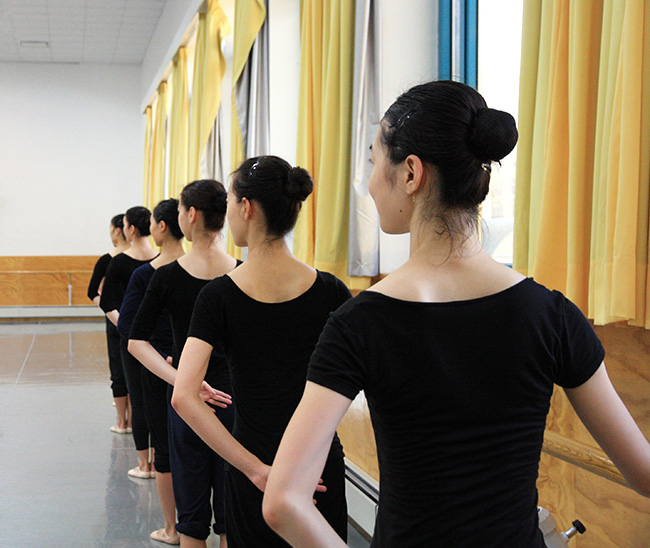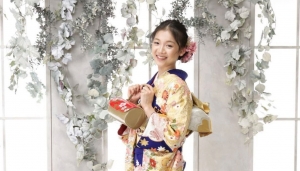Sena gudrība: laba stāja lieliskai veselībai
Es patiešām novērtēju to, kad pasniedzēja satver manu galvu aiz ausīm un stiepj to pret griestiem, līdz, šķiet, es pārtrūkšu. Patiešām. Viņa patiesībā labo manu stāju, un palīdz man izskatīties pēc iespējas staltākai un enerģiskākai. (Es jums vēlāk parādīšu, kā to izdarīt, lai arī jūs varētu pamēģināt!)
Stāja visiem
Fiziologi jums pateiks, ka laba stāja pasargā jūs no nepatīkamām sāpēm kaulos, locītavās un muskuļos. Tā ietekmē pat orgānu darbību, asinsspiedienu un elpošanu. Dzīves treneri uzsver tā nozīmi spilgta un pārliecināta izskata veidošanā.
Klasiskajiem ķīniešu dejotājiem perfekta stāja ir izcilākā profesionalitātes pazīme. Tas ir viens no katra iesācēja pamatapmācības soļiem, un tam tiek pievērsta īpaša uzmanība visas mūsu karjeras gaitā.
Sena paruna vēsta: lai radītu brīnišķīgu darbu, meistaram ir nepieciešami vislabākie instrumenti. Nevainojama stāja ir kā skaists, tukšs audekls. Tas ir ne tikai lielisks sākumpunkts neskaitāmām klasiskās ķīniešu dejas pozām un kustībām, bet arī ļauj mums izskatīties par dažiem centimetriem garākiem un dažiem kilogramiem slaidākiem.
Senajā Ķīnā, tāpat kā dažās Rietumu kultūrās, pareiza stāja bija obligāts nosacījums etiķetes apgūšanā, kā arī būtiska pamatizglītības sastāvdaļa. Tradicionālajos pamattekstos, tādos kā Rituālu grāmata (禮記) un Standarti kā būt labam skolēnam un bērnam (弟子規), ir ietvertas detalizētas instrukcijas un piemēri, kā katram izglītotam cilvēkam būtu jāmetas ceļos un jāstāv.
Pateicoties tradicionālajai ķīniešu medicīnai, ļaudis zināja par nelāgajām sekām, ko rada slikta stāja, kas aizsprosto dzīvībai svarīgus enerģētiskos kanālus visā viņu ķermenī. Toreiz stājai nebija nekāda sakara ar salīkušas muguras veidošanos.
Un tāpēc šeit ir daži padomi, kā būt staltam, nevis salīkušam:

1. Visvērtīgākā stāvēšana
Katru dienu deju stundā mēs piecas minūtes pavadām vienkārši stāvot. Tomēr tā nav parasta stāvēšana – tā ir visvērtīgākā stāvēšana, kuru mēs pielietojam visas dienas garumā.
Būtībā jūs stiepjaties vertikāli tik augstu, cik vien varat: ar pēdām spiediet uz leju, vienlaikus ar galvas augšdaļu stiepieties pret griestiem. Taču nevajadzētu sasprindzināties. Ak, un neaizmirstiet elpot.
Šeit, soli pa solim, sniegti norādījumi:
Nostājieties ar kājām kopā. Turiet ceļus taisni un papēžus kopā, purngalus pavērsiet uz sāniem tā, lai veidotos dabiska V burta forma. Kājām jāsaskaras pēc iespējas vairāk, nesasprindzinot četrgalvu muskuli. Neliecieties pret grīdu – turiet sevi ar mugurkaula palīdzību. Fiksējiet krūškurvja priekšpusi, un ievelciet vēderu. Nolaidiet plecu lāpstiņas uz leju, vienlaikus izstiepjot plecus taisni uz sāniem. Turiet galvu un kaklu taisni, it kā jūsu galvvidus mēģinātu iziet cauri griestiem.
2. Goda siena
Vienkāršākais pašpārbaudes veids ir nostāties pie sienas. Atbalstieties tā, lai jūsu galva, pleci un sēžas muskuļi pieskartos sienai (taču nav obligāti to darīt ar papēžiem, ja tas nav ērti). Centieties panākt, lai jūsu kakls atrastos aptuveni 2,5 centimetru, bet muguras daļa aptuveni 5 centimetru attālumā [no sienas]. Stāviet šādā pozīcijā dažas minūtes dienā, lai palīdzētu ķermenim iegaumēt taisnās stāvēšanas sajūtu.
3. Ieskatieties!
Ikreiz, kad ejat garām spogulim, tā vietā, lai pārliecinātos, ka zobi ir tīri un vai mati ir kārtībā (kaut gan arī to jūs varat darīt), pārbaudiet, vai jūsu stāja ir pareiza. Apskatiet sevi: vai no auss iet taisna līnija caur plecu, gurnu, ceļgalu un potīti? Pēc tam pārbaudiet, vai jūsu gurni un ceļi ir vienā līmenī un pleci iztaisnoti.

4. Iztēlojieties!
Strādāt pie stājas jūs varat jebkur. Ikreiz, kad jūtaties kā burbulis, iztēlojieties, ka cauri jūsu mugurkaulam iet stīga, un velk jūs augšup.
5. Viegls mērķis sliktam augumam?
Sēdēšanas epidēmijas upuri: aizsargājiet savu ķermeņa stāju birojā, automašīnā vai uz dīvāna viesistabā. Noteikti atbalstieties pret krēsla atzveltni (tas novērsīs sakumpšanu vai saliekšanos) un vienmērīgi novietojiet kājas uz grīdas vai kāju balsta.
Arī tradicionālā ķīniešu medicīna uzskata, ka ilgstoša sēdēšana kavē asinsriti, bloķē cji plūsmu un kaitē orgānu veselībai. Un tāpēc, pat ja izmantojat ergonomiskāko sēdekli un darba galdu, mēģiniet, kad vien tas ir iespējams, piecelties, lai izstieptos un izkustētos. Ja jūtat diskomfortu, ir pienācis laiks piecelties un izvingrināties. Padzerieties ūdeni, pagroziet kaklu, pacelieties uz pirkstgaliem vai palēkājiet uz vietas.
6. Retro stils
Tā kā Ķīnā krēsli kļuva populāri tikai 12. gadsimtā, lielāko daļu savas vēstures ķīnieši sēdēšanu uzskatīja par šausmīgu barbarismu. Pareiza nomešanās uz ceļiem tika uzskatīta par labāku veidu, kā arī labas disciplīnas un pieklājības pazīmi.
Nomešanās ceļos (sēžot uz papēžiem) novērš sakumpšanu un ierobežo ceļgalu artrītu. Saskaņā ar tradicionālo ķīniešu medicīnu, tas stimulē arī daudzās cīpslas ap ceļgalu, un atjauno centrālo enerģijas plūsmu, kas palīdz kuņģim, liesai un aknām, un ir pazīstams kā Noiet trīs jūdzes (足三里).
Iztaisnošanās patiešām var palīdzēt uzlabot situāciju. Tāpēc izmēģiniet to un pārbaudiet, vai arī jūs sajutīsieties lieliski.

Betija Vana
Līdzautors
July 30, 2015






